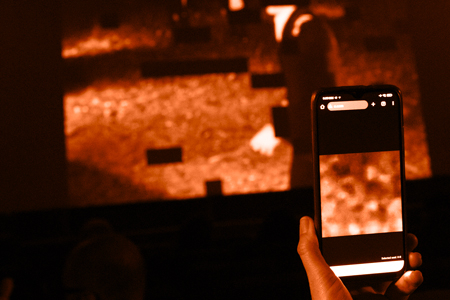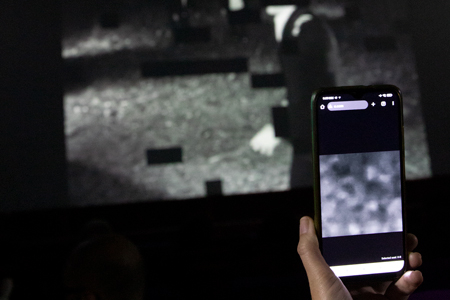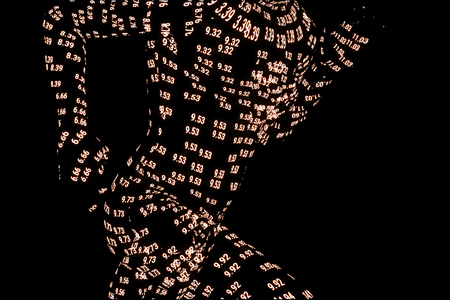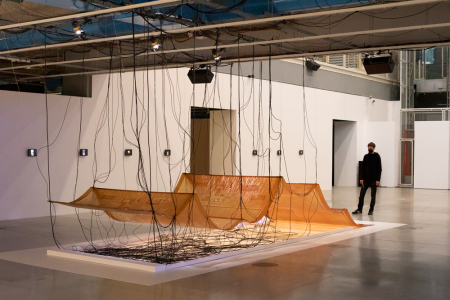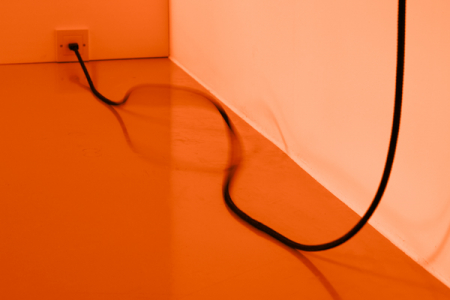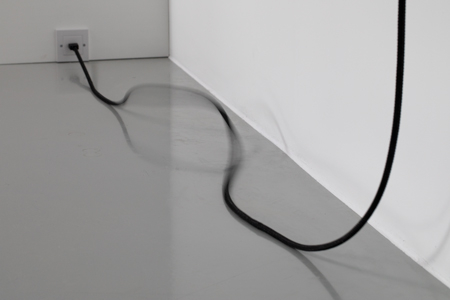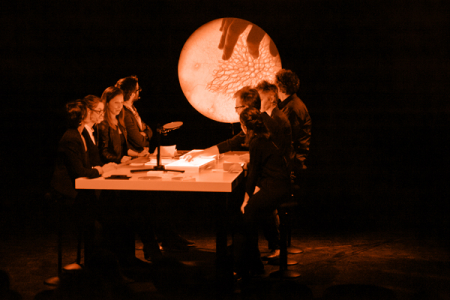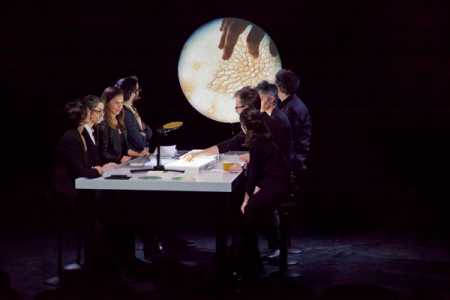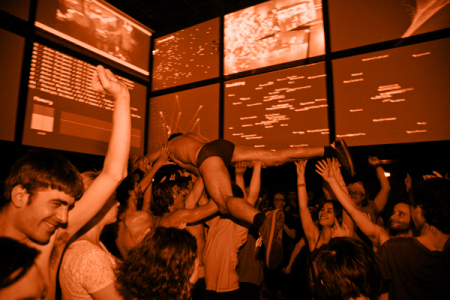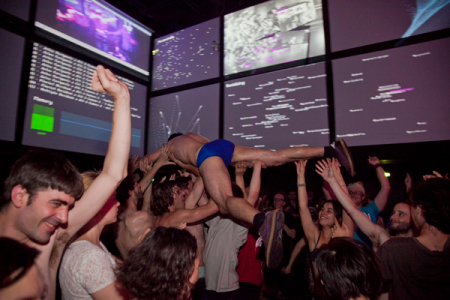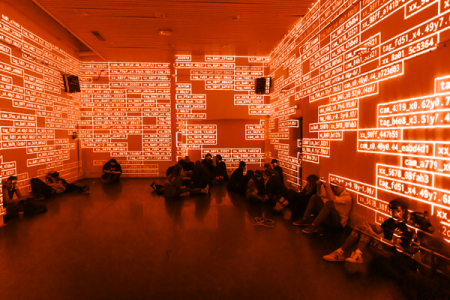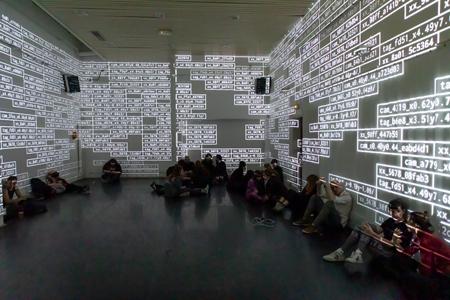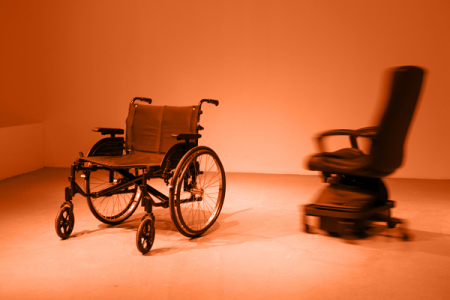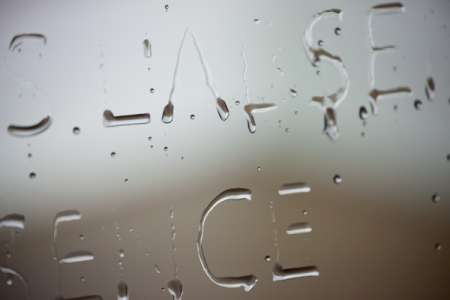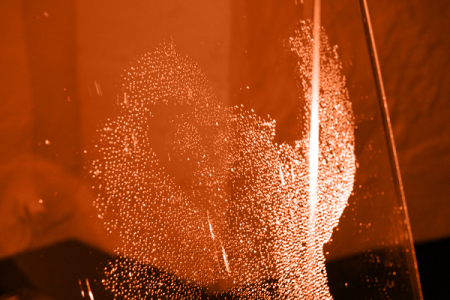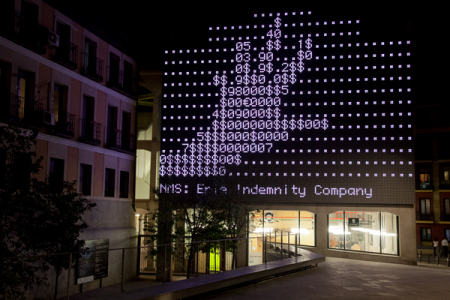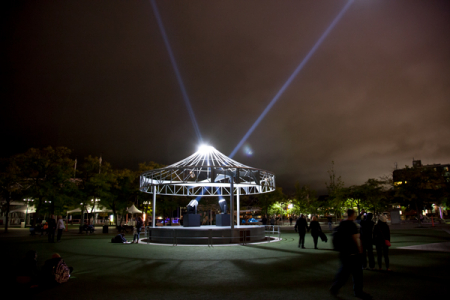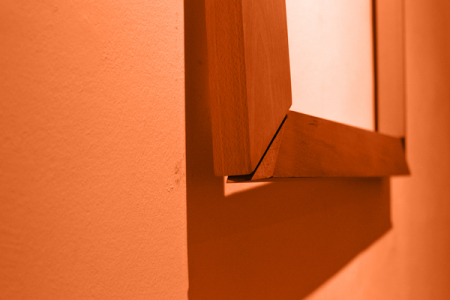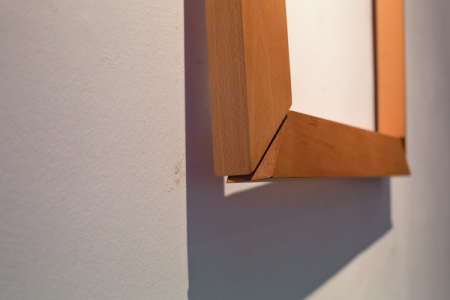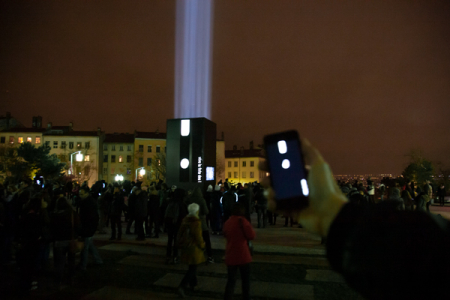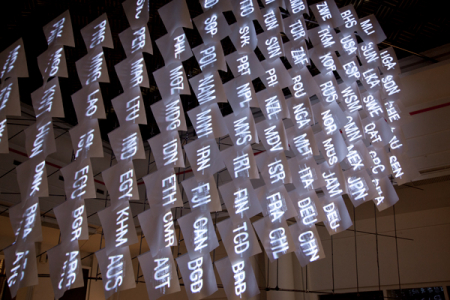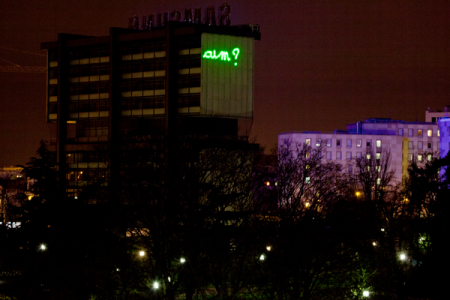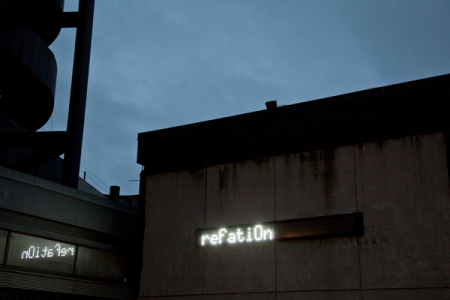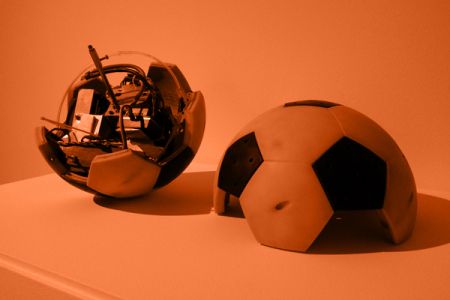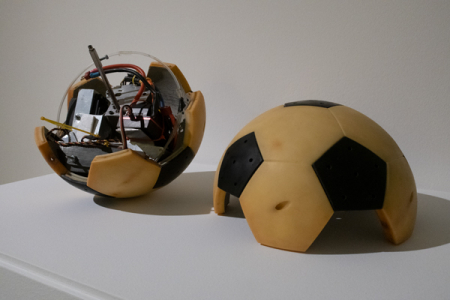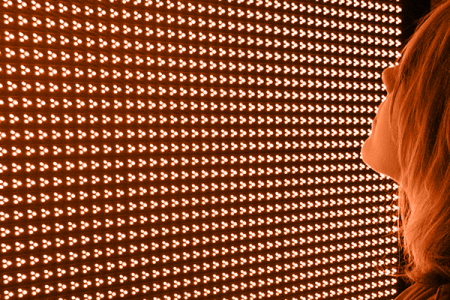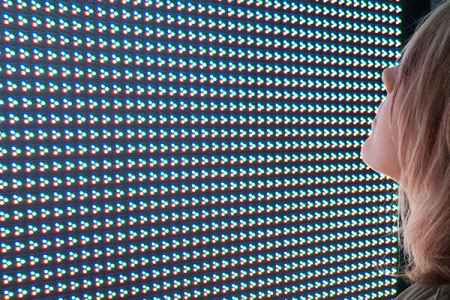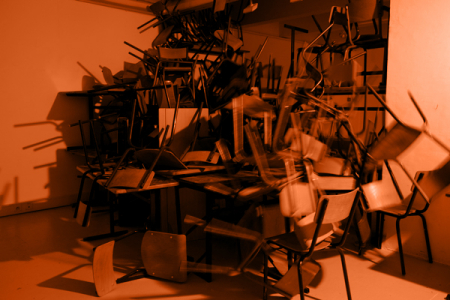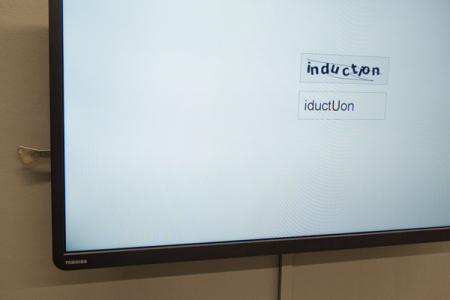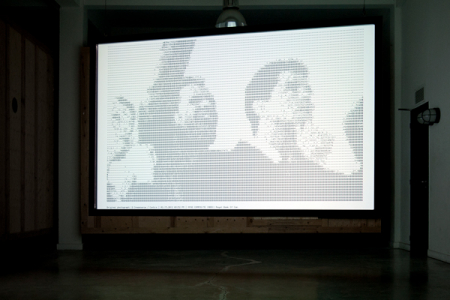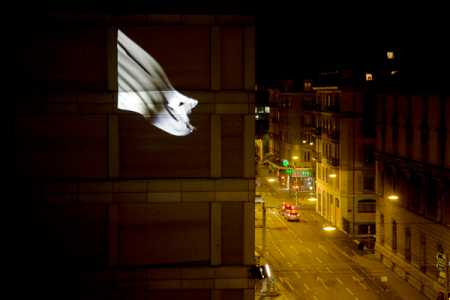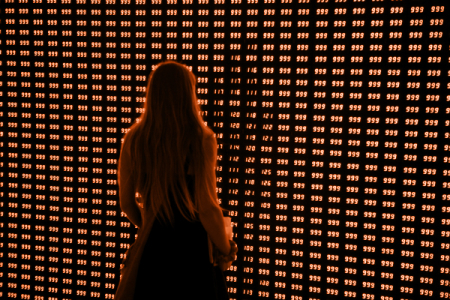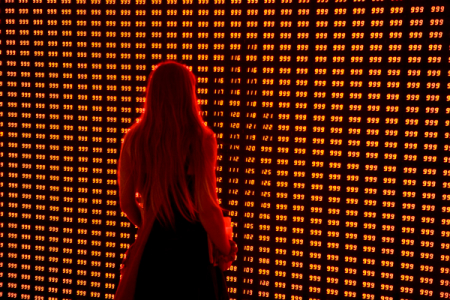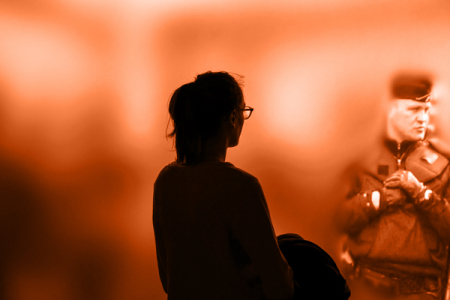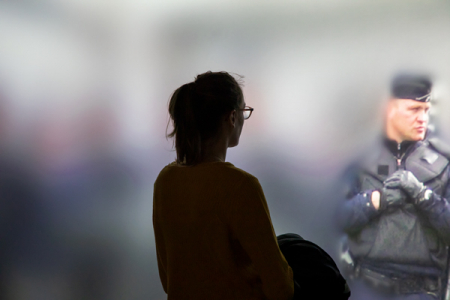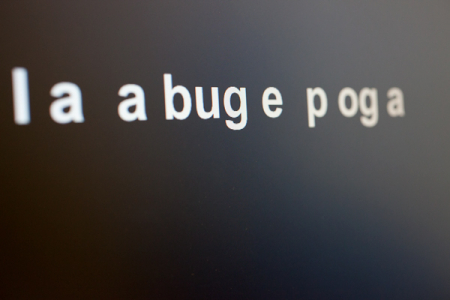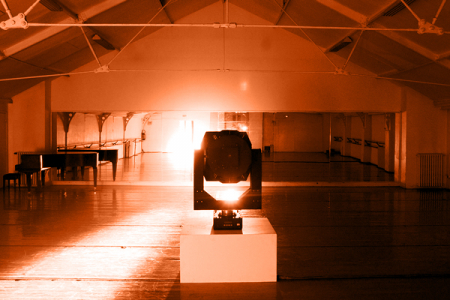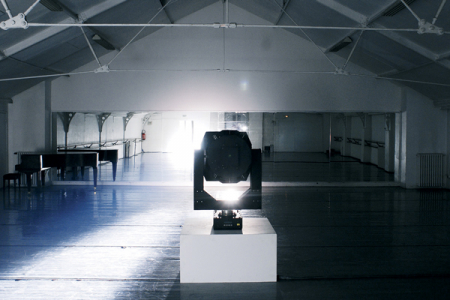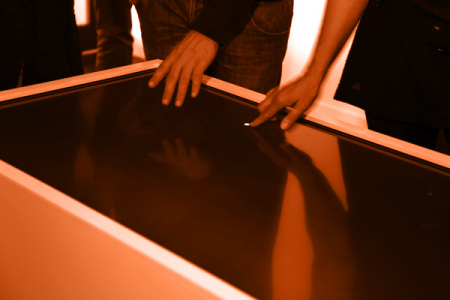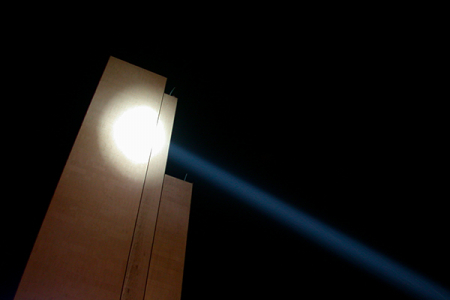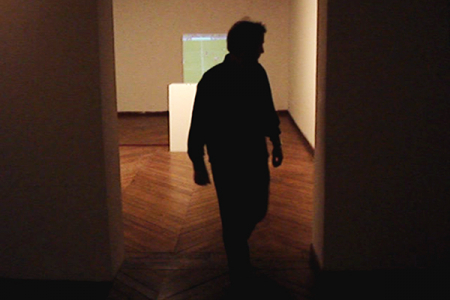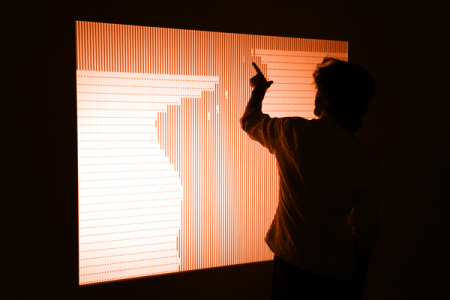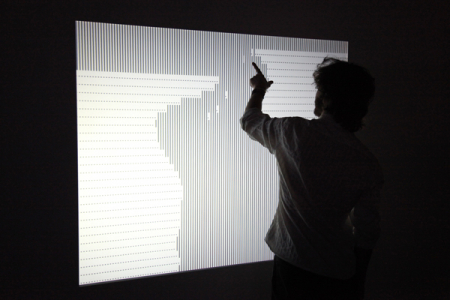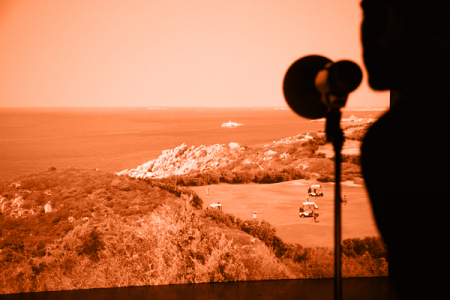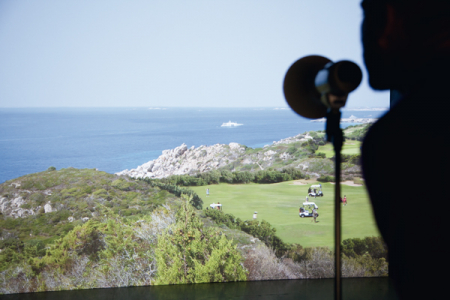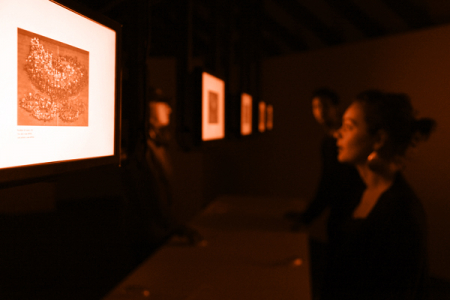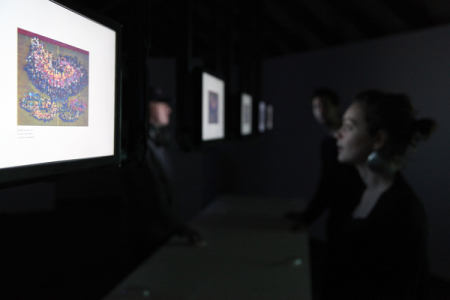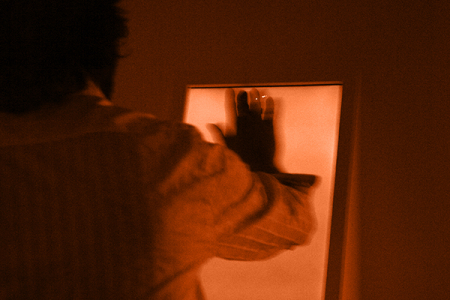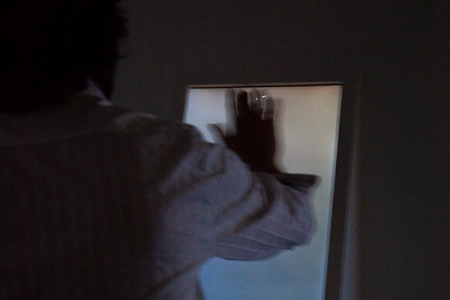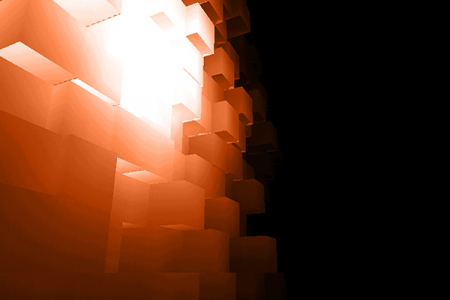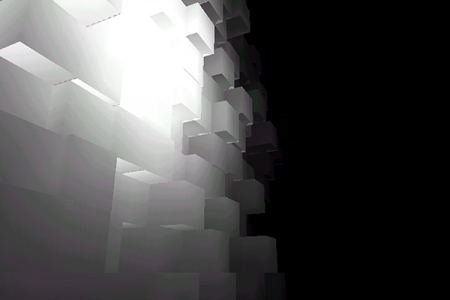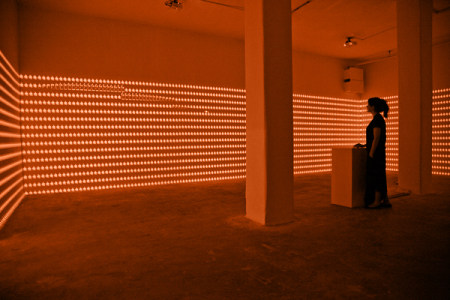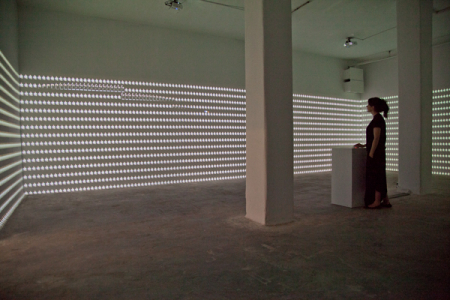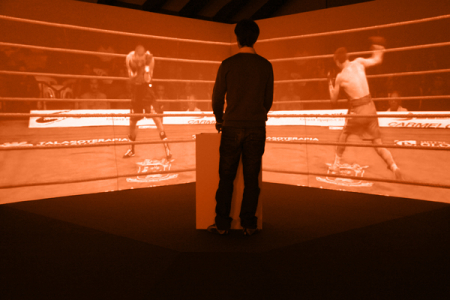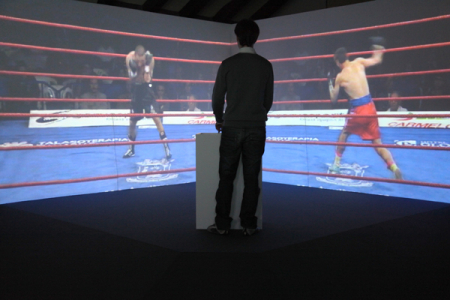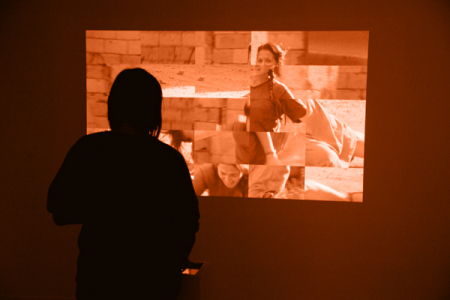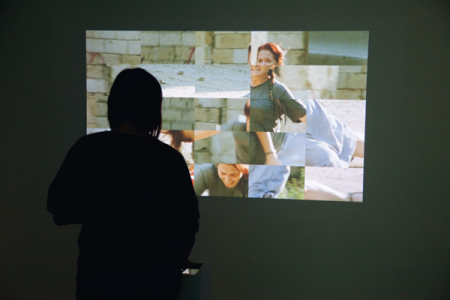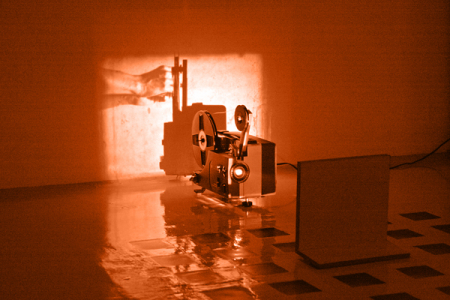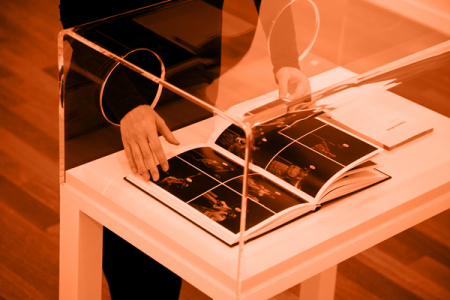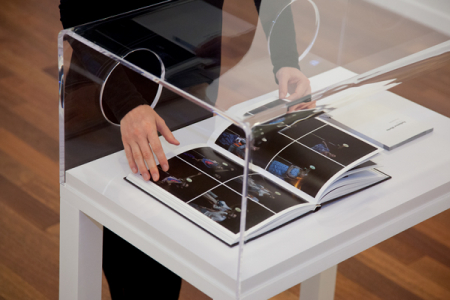Fossilation
Installation, 2021
Bioplastic membrane, apparatus capturing the residual energy of the building as it interacts with light
A collective project carried out by Brice Ammar-Khodja, Alexandra Bachmayer, Samuel Bianchini, Marie-Pier Boucher, Didier Bouchon, Maria Chekhanovich, Matthew Halpenny, Alice Jarry, Raphaëlle Kerbrat, Annie Leuridan, Vanessa Mardirossian, Asa Perlman, Philippe Vandal, Lucile Vareilles.
Production :
- Experimenting and making the bioplastic membrane: Alexandra Bachmayer, Maria Chekhanovich, Vanessa Mardirossian with the collaboration of Brice Ammar-Khodja
- Capturing the residual energy: Brice Ammar-Khodja, Didier Bouchon, Matthew Halpenny, Raphaëlle Kerbrat, Asa Perlman, Philippe Vandal
- Light design: Annie Leuridan with the collaboration of Louise Rustan
- Computer programming: Didier Bouchon
- Overseeing the production of the work and its spatial installation: Lucile Vareilles
- Technical support for production and/or editing: Théo Chauvirey, Corentin Loubet, Joséphine Mas, Simon Paugoy
This project, combining design, art, techno sciences, and media studies, is co-developed as part of an international collaboration between three research-creation teams (Concordia University, Montreal; EnsadLab - the École nationale supérieure des Arts Décoratifs laboratory – Université PSL; University of Toronto Mississauga).
The project, co-directed by Alice Jarry (Concordia University), Marie-Pier Boucher (University of Toronto Mississauga), and Samuel Bianchini (EnsadLab / Reflective Interaction and Chair in Arts and Sciences), received support from the Social Sciences and Humanities Research Council of Canada (SSHRC), the Chair in Arts and Sciences of the École polytechnique, the École des Arts Décoratifs - PSL, the Daniel and Nina Carasso Foundation, Hexagram – international network of research-creation in art, culture, and technology, and Concordia University's Milieux Institute for art, culture, and technology.
The project was put together for the “Matières d'image” exhibit as part of the 2021 Hors Pistes Festival, curated by Géraldine Gomez.
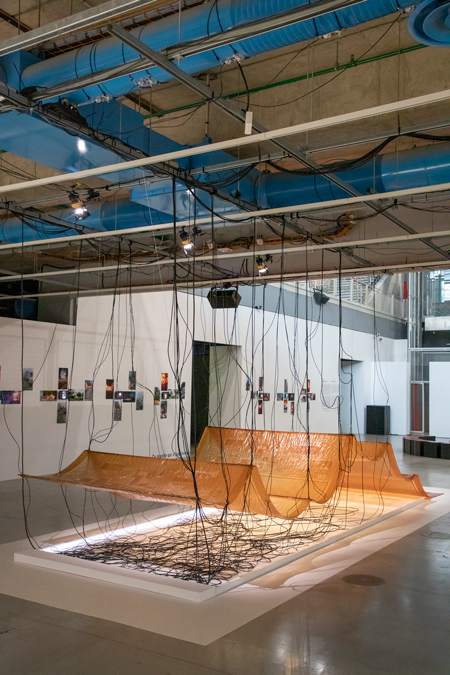
To download this image in HD (Tiff), click here
Photo : Samuel Bianchini
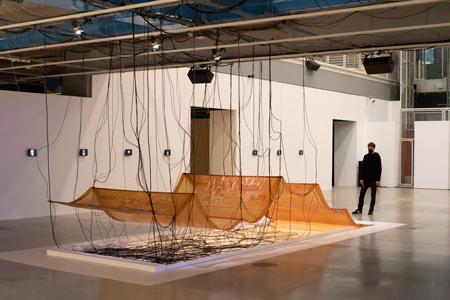
To download this image in HD (Tiff), click here
Photo : Samuel Bianchini
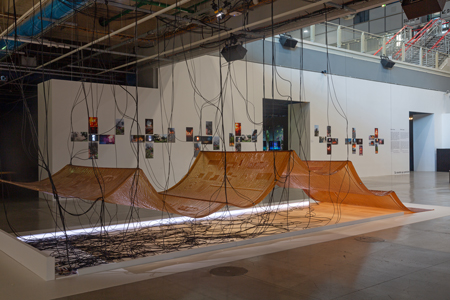
To download this image in HD (Tiff), click here
Photo : Hervé Véronèse - Centre Pompidou
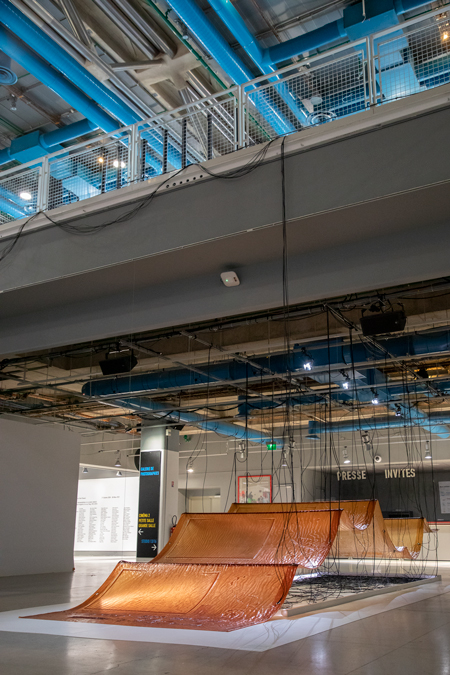
To download this image in HD (Tiff), click here
Photo : Samuel Bianchini

To download this image in HD (Tiff), click here
Photo : Hervé Véronèse - Centre Pompidou
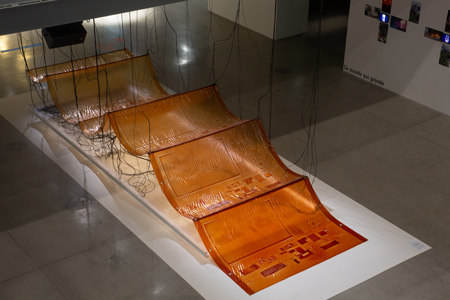
To download this image in HD (Tiff), click here
Photo : Hervé Véronèse - Centre Pompidou
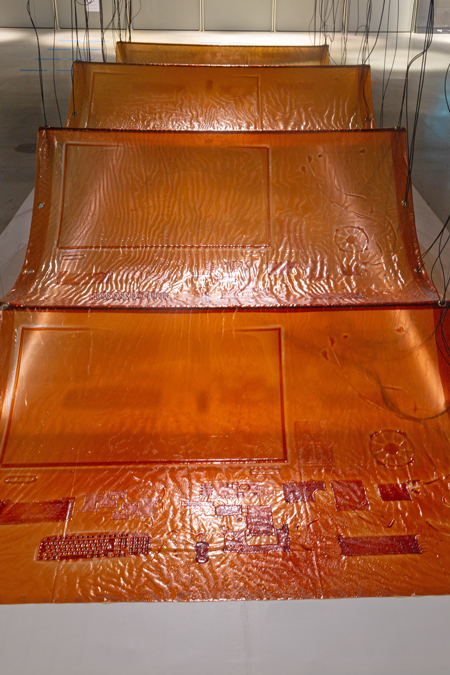
To download this image in HD (Tiff), click here
Photo : Hervé Véronèse - Centre Pompidou

To download this image in HD (Tiff), click here
Photo : Samuel Bianchini

To download this image in HD (Tiff), click here
Photo : Hervé Véronèse - Centre Pompidou

To download this image in HD (Tiff), click here
Photo : Samuel Bianchini
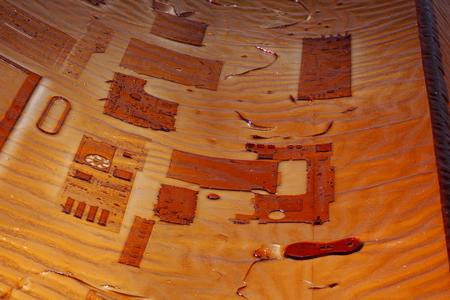
To download this image in HD (Tiff), click here
Photo : Hervé Véronèse - Centre Pompidou
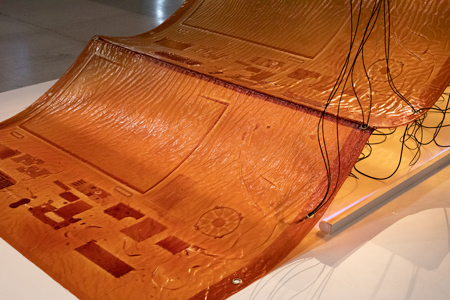
To download this image in HD (Tiff), click here
Photo : Samuel Bianchini
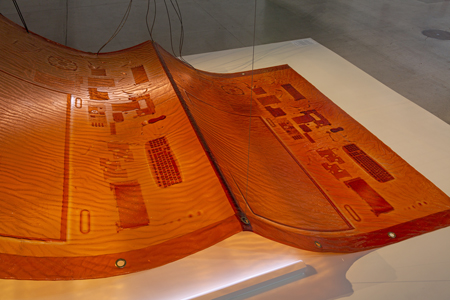
To download this image in HD (Tiff), click here
Photo : Hervé Véronèse - Centre Pompidou

To download this image in HD (Tiff), click here
Photo : Hervé Véronèse - Centre Pompidou

To download this image in HD (Tiff), click here
Photo : Hervé Véronèse - Centre Pompidou

To download this image in HD (Tiff), click here
Photo : Samuel Bianchini
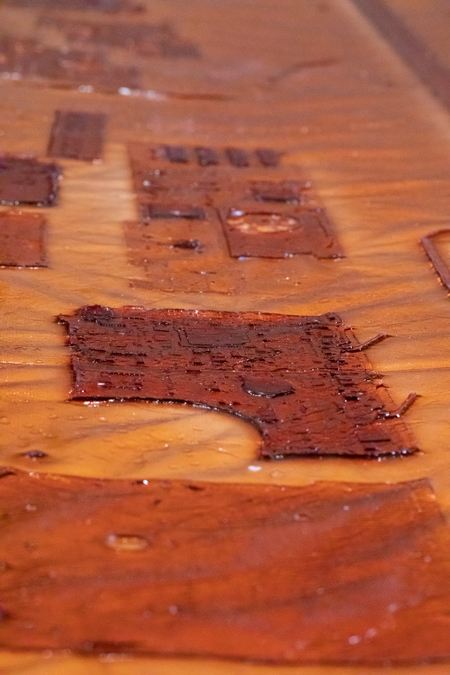
To download this image in HD (Tiff), click here
Photo : Samuel Bianchini
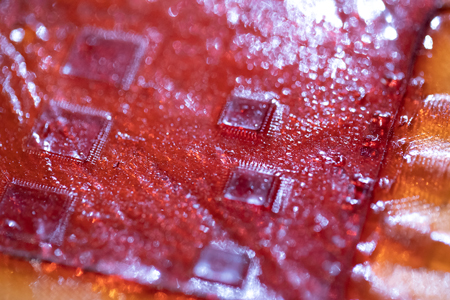
To download this image in HD (Tiff), click here
Photo : Samuel Bianchini
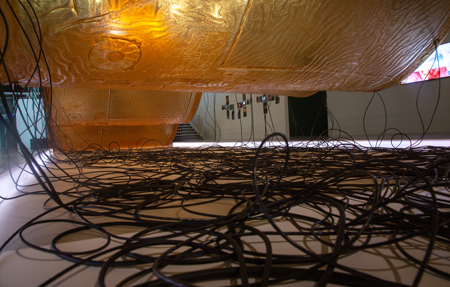
To download this image in HD (Tiff), click here
Photo : Hervé Véronèse - Centre Pompidou
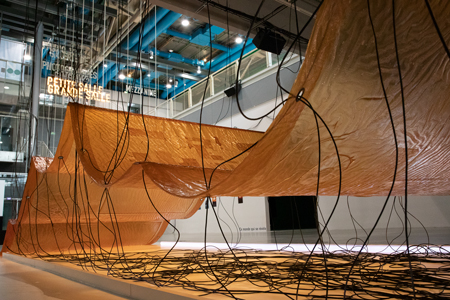
To download this image in HD (Tiff), click here
Photo : Samuel Bianchini

To download this image in HD (Tiff), click here
Photo : Hervé Véronèse - Centre Pompidou

To download this image in HD (Tiff), click here
Photo : Samuel Bianchini
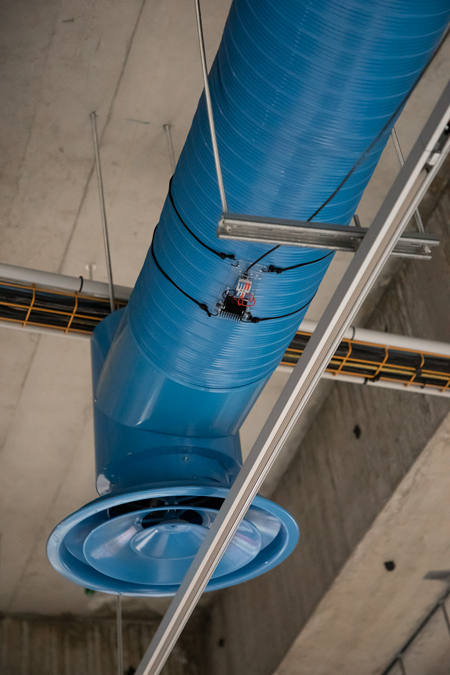
To download this image in HD (Tiff), click here
Photo : Samuel Bianchini

To download this image in HD (Tiff), click here
Photo : Hervé Véronèse - Centre Pompidou

To download this image in HD (Tiff), click here
Photo : Samuel Bianchini
A large transparent canvas seems to hover horizontally over the ground. Its bright colour is slightly animated by the fluctuating lights that shine through it. Several cables come out of the bottom of this vast membrane, like they're growing straight out of it; they stretch out towards the ceiling as if trying to cling to it. This surface is made of a bioplastic whose variable thickness generates a pattern, an image, images. Actually this long flexible band also recalls a film strip on which a few frames appear in succession. Rather than the result of shooting an image, these quasi-images are generated and slowly shaped: an imprint forms the image, the imprint of a electronic display device. Like a fossil from our own era, the counter-form of bare components (flat screen, cables, computer and its peripherals) is printed onto matter. But, image after image, this imprint disappears like the scale model of an open-pit mine being gradually buried. The process of shaping, or "unshaping" is thus depicted by the sequencing itself: it's the same image that's represented, but, frame by frame, literally merges with the media, like a video dissolve, but physical this time. And while this film strip isn't running through a projector, back lighting puts its patterns in motion: the light is unstable, its vibrations and other variations react to interferences originating from the recording of the exhibition space's residual energies. The membrane is not only attached to the ceiling, it is also connected to the building via a great number of sensors, their visible and hanging cables deployed like tentacles searching for food, for energy. Thus, the pipes and other colorful cables that make up the Centre Pompidou signature architecture are invested by these sensors which convert the various flows, activities, and traffic that circulate through the building into electricity. As a whole, this apparatus is directly plugged into the space, configuring an ecosystem in which the image, far from immaterial, is composed of and reacts to the different specific aspects of the situation. The image is no longer the simple reflection of a past reality; answering to a kind of potential media archeology, it appears today as the localized physical trace of a future past.
Fossilation, 2021
Centre Georges Pompidou, Paris, janvier 2021.
Images : Brice Ammar-Khodja, Pierre Bouchilloux, Alain Declercq, Thomas Vauthier
Sound : Arnaud Pichon
Editing : Alain Declercq
3mn02s - Haut débit recommandé
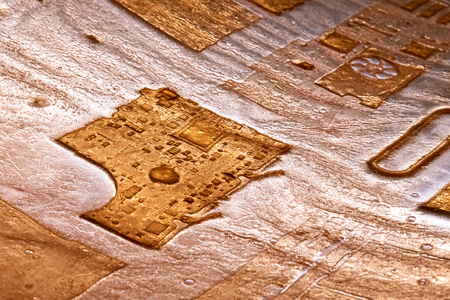
To download this image in HD (Tiff), click here
Photo : Samuel Bianchini

To download this image in HD (Tiff), click here
Photo : Samuel Bianchini
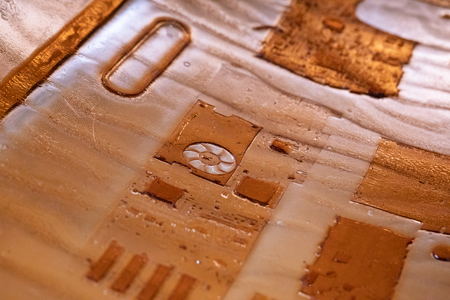
To download this image in HD (Tiff), click here
Photo : Samuel Bianchini
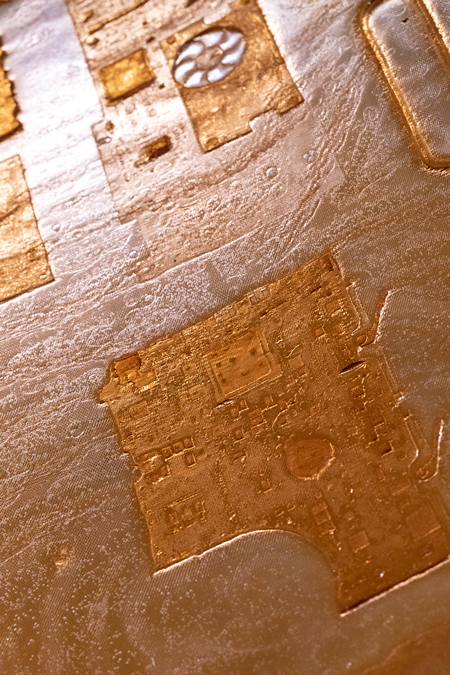
To download this image in HD (Tiff), click here
Photo : Samuel Bianchini
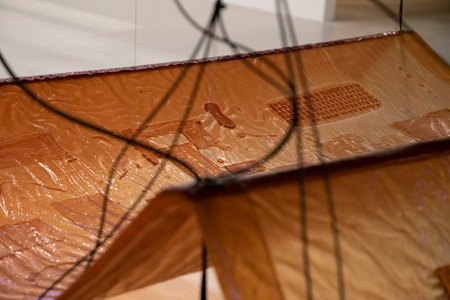
To download this image in HD (Tiff), click here
Photo : Samuel Bianchini

To download this image in HD (Tiff), click here
Photo : Samuel Bianchini
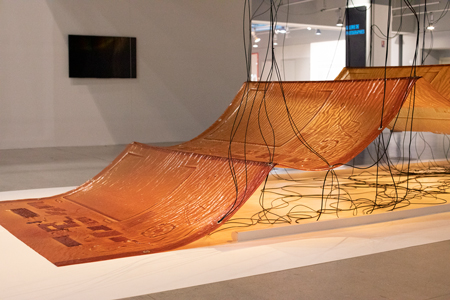
To download this image in HD (Tiff), click here
Photo : Samuel Bianchini
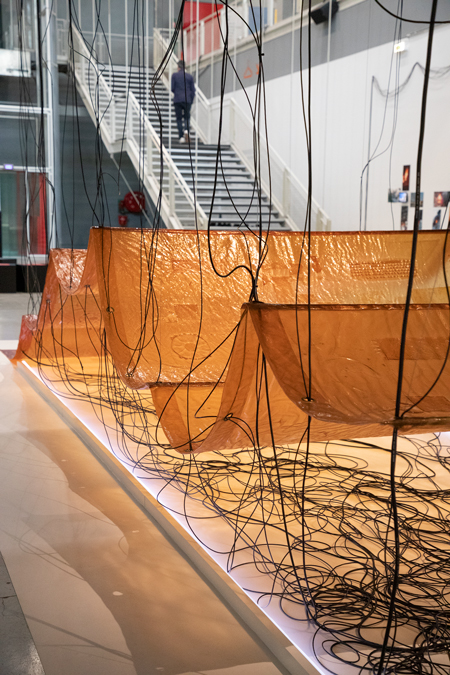
To download this image in HD (Tiff), click here
Photo : Samuel Bianchini
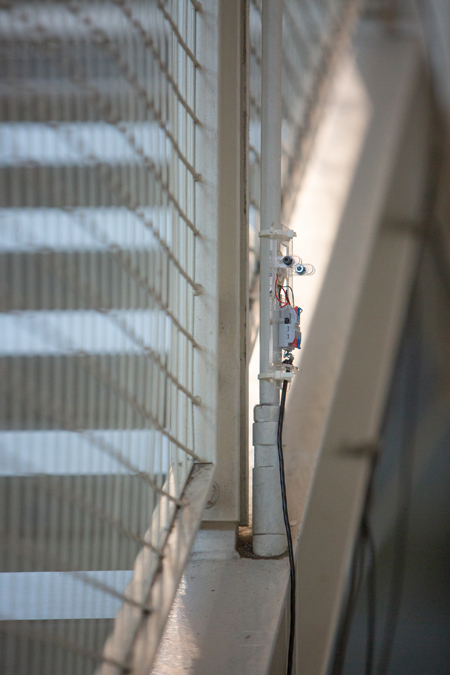
To download this image in HD (Tiff), click here
Photo : Hervé Véronèse - Centre Pompidou
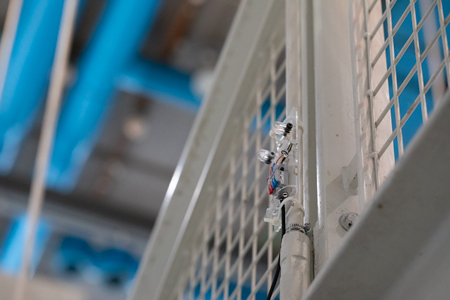
To download this image in HD (Tiff), click here
Photo : Samuel Bianchini

To download this image in HD (Tiff), click here
Photo : Samuel Bianchini
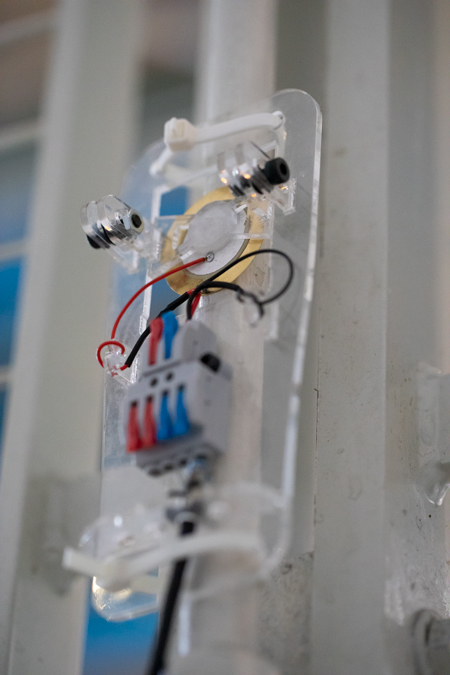
To download this image in HD (Tiff), click here
Photo : Samuel Bianchini
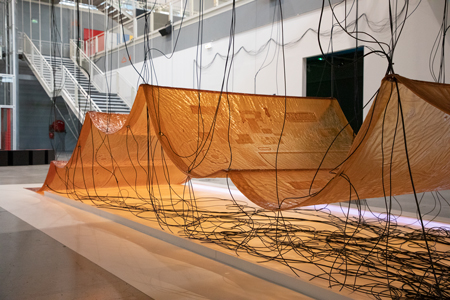
To download this image in HD (Tiff), click here
Photo : Samuel Bianchini
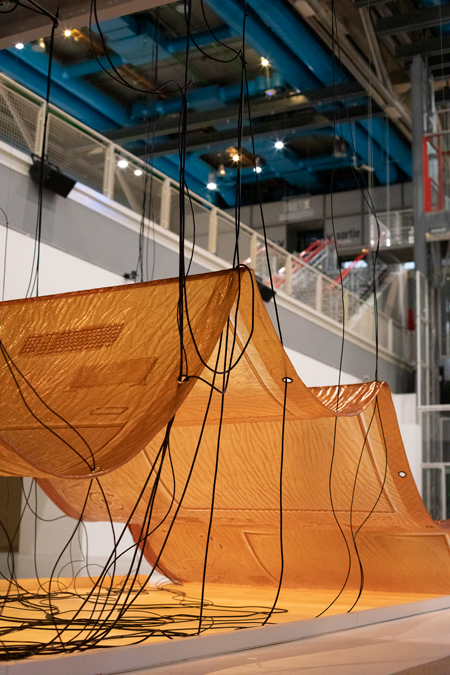
To download this image in HD (Tiff), click here
Photo : Samuel Bianchini
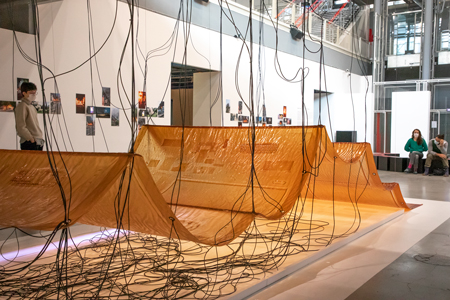
To download this image in HD (Tiff), click here
Photo : Samuel Bianchini
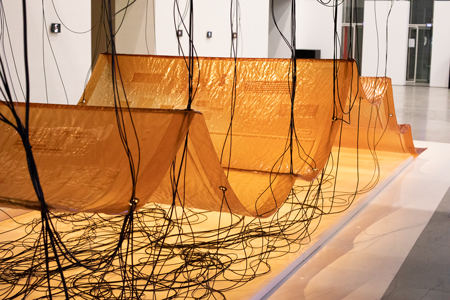
To download this image in HD (Tiff), click here
Photo : Samuel Bianchini
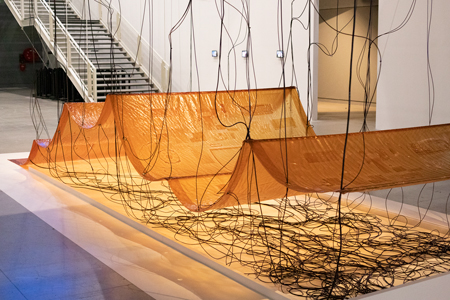
To download this image in HD (Tiff), click here
Photo : Samuel Bianchini
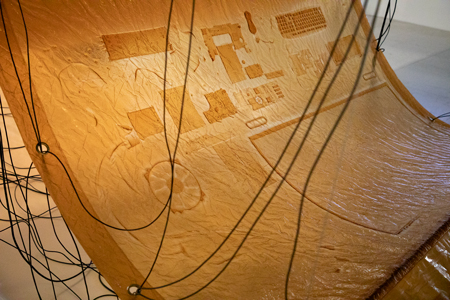
To download this image in HD (Tiff), click here
Photo : Joséphine Mas
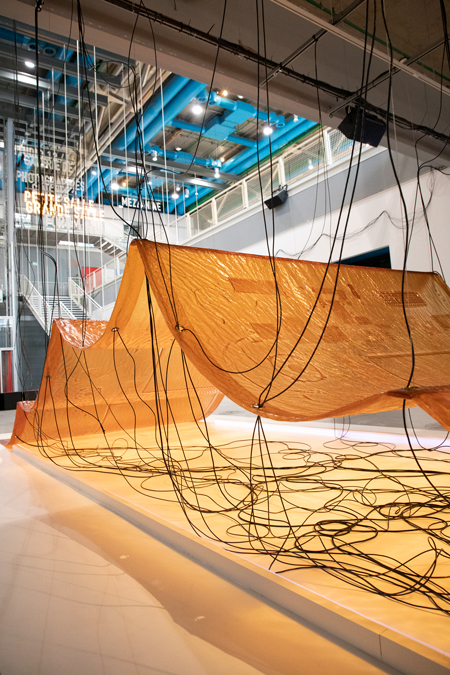
To download this image in HD (Tiff), click here
Photo : Samuel Bianchini
